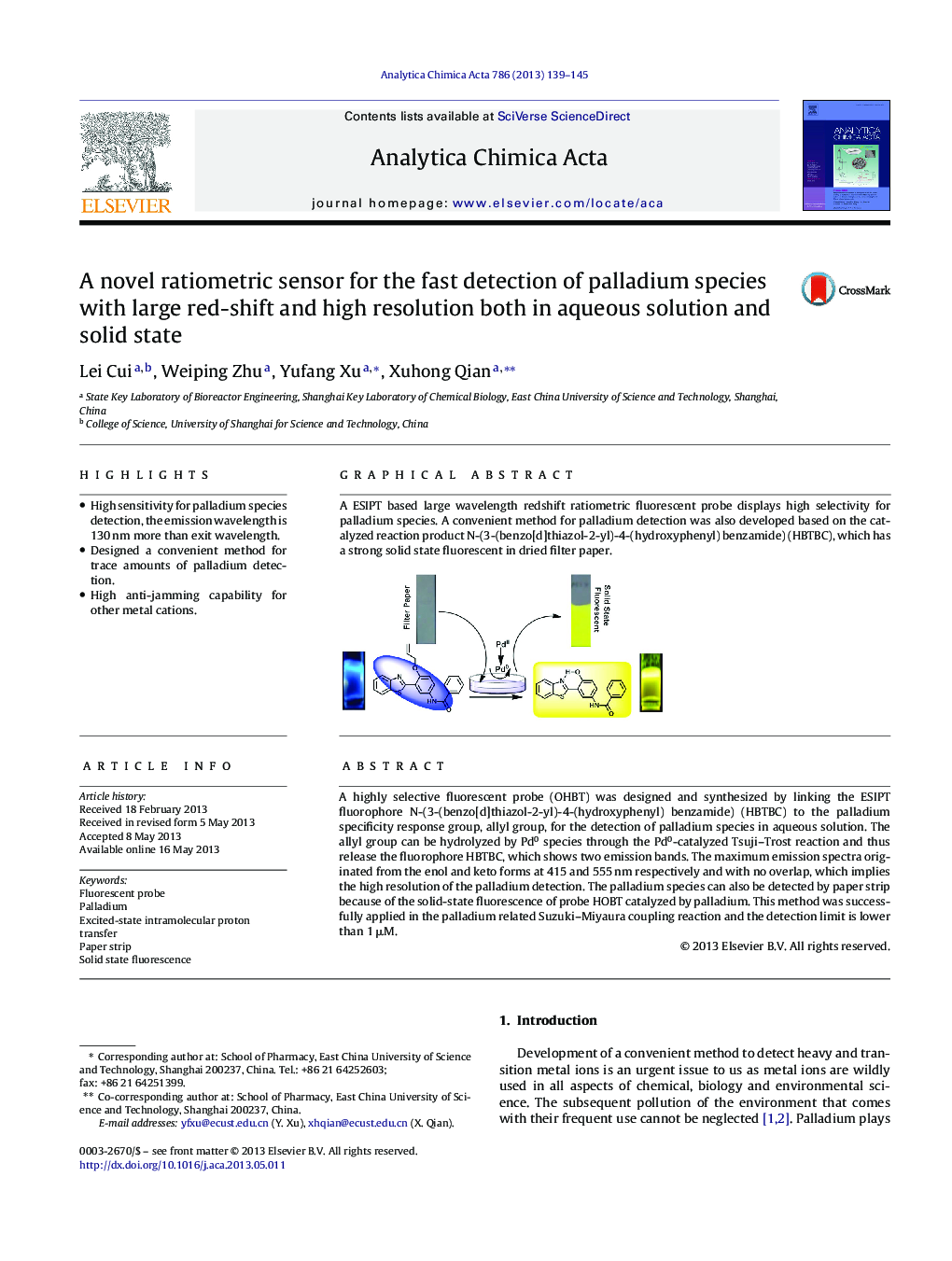| Article ID | Journal | Published Year | Pages | File Type |
|---|---|---|---|---|
| 1164699 | Analytica Chimica Acta | 2013 | 7 Pages |
•High sensitivity for palladium species detection, the emission wavelength is 130 nm more than exit wavelength.•Designed a convenient method for trace amounts of palladium detection.•High anti-jamming capability for other metal cations.
A highly selective fluorescent probe (OHBT) was designed and synthesized by linking the ESIPT fluorophore N-(3-(benzo[d]thiazol-2-yl)-4-(hydroxyphenyl) benzamide) (HBTBC) to the palladium specificity response group, allyl group, for the detection of palladium species in aqueous solution. The allyl group can be hydrolyzed by Pd0 species through the Pd0-catalyzed Tsuji–Trost reaction and thus release the fluorophore HBTBC, which shows two emission bands. The maximum emission spectra originated from the enol and keto forms at 415 and 555 nm respectively and with no overlap, which implies the high resolution of the palladium detection. The palladium species can also be detected by paper strip because of the solid-state fluorescence of probe HOBT catalyzed by palladium. This method was successfully applied in the palladium related Suzuki–Miyaura coupling reaction and the detection limit is lower than 1 μM.
Graphical abstractA ESIPT based large wavelength redshift ratiometric fluorescent probe displays high selectivity for palladium species. A convenient method for palladium detection was also developed based on the catalyzed reaction product N-(3-(benzo[d]thiazol-2-yl)-4-(hydroxyphenyl) benzamide) (HBTBC), which has a strong solid state fluorescent in dried filter paper.Figure optionsDownload full-size imageDownload as PowerPoint slide
